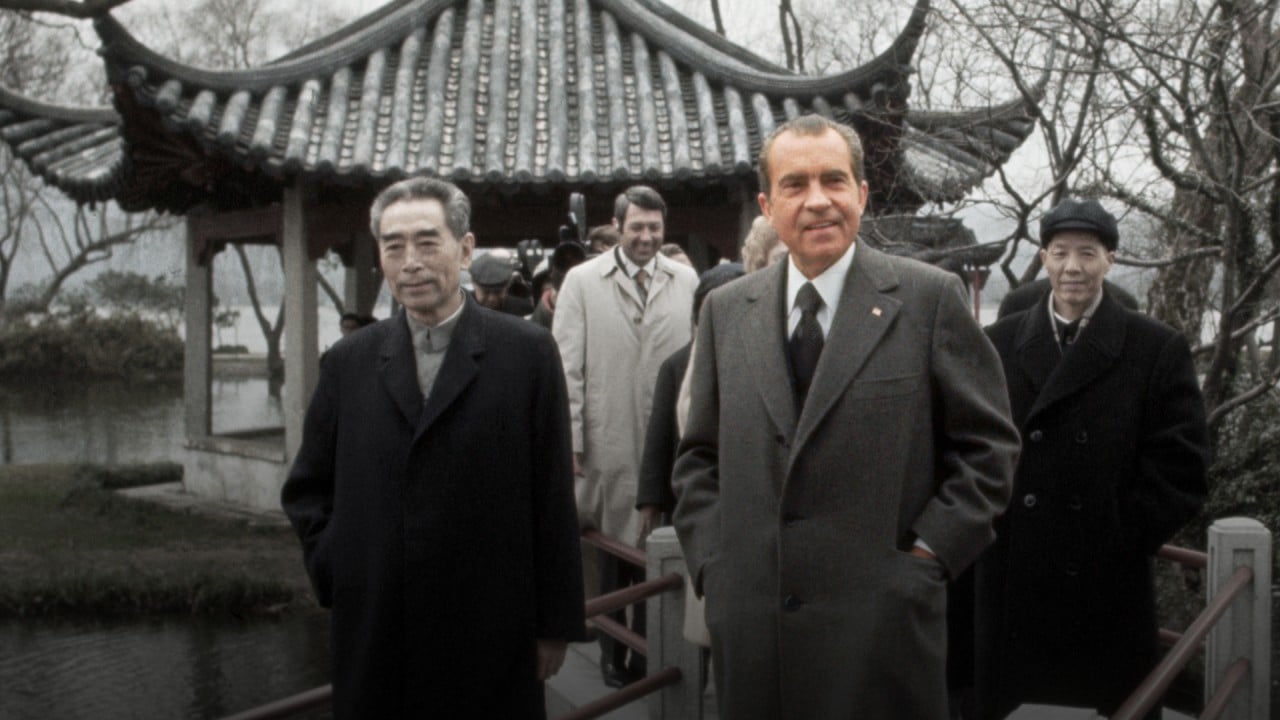
Nixon in China: 50 years on, pessimism over Sino-US ties might again prove unfounded
- On the 50th anniversary of the historic visit, it is tempting to view the US-China relationship with apprehension, amid tensions over human rights and trade
- Looking back, however, nearly every milestone anniversary of Nixon’s visit appeared similarly fraught, and yet the relationship has managed to endure
Nixon himself had indicated his shifting views in his 1967 article in Foreign Affairs, “Asia After Viet Nam”, arguing that China could not stay outside the “family of nations” forever.
In fact, Nixon began considering the possibility of opening to China in 1968. During a visit to Taiwan, Nixon asked my friend- and future US ambassador to China – Arthur W. Hummel Jnr why we did not have any dialogue with Beijing and how we could go about starting one.
The diplomatic estrangement between the US and China after the establishment of the People’s Republic in 1949 had only been infrequently broken via negotiations in Paris which had proved largely ineffective.
What brought about this shift in China policy? It was not that Nixon had entirely evolved past his Cold Warrior days, but rather it was a change in how he perceived the US’ adversary in this conflict.
The enemy was not monolithic communism, as had been the dominating theory in the 1950s, but rather the Soviet Union. Beijing no longer represented the communist bloc, but was a potential partner, given Washington’s concerns about Soviet militarism and expansion.
While the opening would facilitate significant trade benefits for the US and help lift millions of Chinese out of poverty, neither was the true priority for Nixon or Mao when they met in 1972.
Winston Lord, who was in the room with Mao and Nixon, on US-China relations then and now
As William C. Kirby of Harvard pointed out, the word “trade” only appears once in the minutes of their meeting, when Mao listed it among “smaller issues” to be sorted out later. More than any other factor, a shared fear of the USSR had driven the US and China together.
The culmination of Nixon’s visit was the Shanghai Communique, at the heart of which was a compromise on Taiwan that would pave the way for normalisation between the US and China.
Yet, looking back, nearly every milestone anniversary of Nixon’s visit appeared similarly fraught, but the relationship managed to endure.
Not only Nixon could go to China: there’s still hope for Sino-US relations
China barely acknowledged the 10th anniversary of Nixon’s trip in 1982, when Chinese anger at continued US arms sales to Taiwan under Ronald Reagan had analysts speculating that Beijing might downgrade diplomatic relations. Deng Xiaoping even bluntly stated then that “Sino-US relations are not good”.
In 1992, the relationship was still reeling from the Tiananmen crackdown less than three years prior. In 2002, president George W. Bush visited China on the 30th anniversary of Nixon’s visit, as the relationship struggled to reconcile lingering issues over Taiwan and human rights with the shared goal of confronting terrorism in the wake of the September 11 terrorist attacks.
It is unclear whether Xi or Biden will officially mark the 50th anniversary. In better days, Biden could have attended the Beijing Olympics and commemorated the 50th anniversary of Nixon’s trip.
Thus, on the 50th anniversary of Nixon’s visit, although the US and China appear further apart than ever, it is important to note that analysts have frequently believed the relationship to be on the brink of collapse, but it has always bounced back. The largest triumph of Nixon’s visit was reassuring both China and America that neither country posed an imminent threat to the other.
Today, with anxieties about a new cold – or hot – war escalating by the day, perhaps what we need now is another face-to-face meeting between two leaders to come to a similar understanding.
Chi Wang, a former head of the Chinese section of the US Library of Congress, is president of the US-China Policy Foundation



